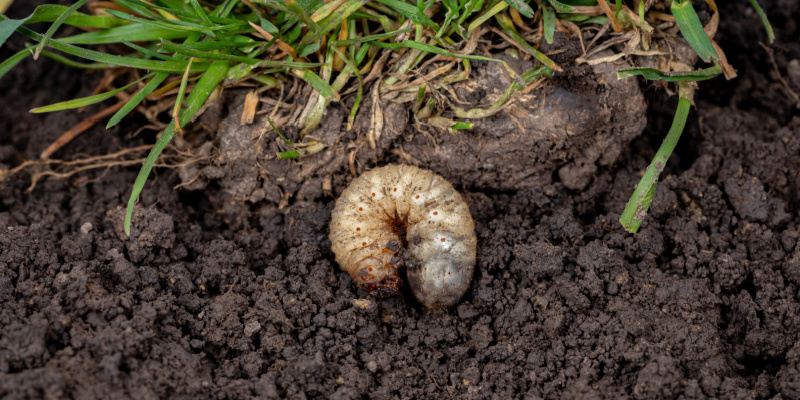A lush, green lawn is a source of pride for homeowners, but it can be vulnerable to various threats, especially from grubs. Grubs, the larvae of beetles, are one of the most destructive pests for lawns. They feed on the roots of grass, causing significant damage. In this blog post, we’ll explore how to identify grub damage, prevent infestations, and effectively treat grub problems to maintain a healthy lawn.
Identifying Grub Damage
Grub damage can often be misidentified as drought stress or disease. Here are signs to look for:
- Brown, Patchy Areas:
Grubs feed on grass roots, causing the grass to brown and die in patches.
- Spongy Lawn:
If your lawn feels spongy underfoot, it may be due to grubs severing the roots of the grass.
- Increased Bird Activity:
Birds may flock to your lawn to feed on the grubs, which can be an early indicator of an infestation.
- Peelable Grass:
If you can easily lift a section of your lawn like a carpet, it could be due to grub damage.
Lifecycle of Grubs
Understanding the lifecycle of grubs is crucial for effective control:
- Egg Laying:
Beetles lay eggs in the soil during late spring or early summer.
- Larvae Stage:
The eggs hatch into grubs, which feed on grass roots.
- Overwintering:
Grubs burrow deeper into the soil to survive the winter.
- Maturation:
In spring, they return to the surface, mature into beetles, and the cycle repeats.
Preventing Grub Infestations
Prevention is key to managing grub populations. Here are some preventive measures:
1. Maintain a Healthy Lawn:
A well-maintained lawn is less susceptible to grub infestations. Regular watering, mowing, and fertilizing can strengthen your lawn.
2. Proper Watering:
Overwatering can attract beetles to lay eggs. Water your lawn deeply, but infrequently.
3. Monitoring Beetle Activity:
Be vigilant during the beetle-laying season and take action if you notice an increase in beetle activity.
Treating Grub Infestations
If you discover a grub problem, here are steps to treat the infestation:
1. Determine the Extent:
Check several areas of your lawn to understand the extent of the infestation. A healthy lawn can tolerate a low level of grubs.
2. Appropriate Timing:
The best time to treat grubs is when they are young and actively feeding near the soil’s surface, usually in late summer or early fall.
3. Use Insecticides:
Products containing imidacloprid, thiamethoxam, or chlorantraniliprole can be effective against grubs. Follow the label instructions for safe and effective use.
4. Consider Biological Controls:
Nematodes, or milky spore disease, are natural alternatives to chemical insecticides.
Professional Lawn Care Services
Sometimes, managing grub damage can be challenging, and professional assistance may be required. Lawn care services offer:
1. Expertise:
Professionals have the knowledge and experience to correctly identify and treat grub problems.
2. Effective Treatment Options:
They have access to professional-grade products and equipment for more efficient and effective treatment.
3. Integrated Pest Management:
Professionals can implement a comprehensive approach to managing grubs while minimizing environmental impact.
4. Preventive Strategies:
They can also offer ongoing maintenance and preventive strategies to keep your lawn healthy.
Regular Monitoring and Maintenance
Consistent monitoring and maintenance are essential to protect your lawn from future grub damage:
- Regular Inspections:
Regularly check for signs of grubs, especially during their peak feeding times.
- Lawn Aeration:
Aerating your lawn can improve its health and reduce the likelihood of severe grub damage.
- Maintain Biodiversity:
Encouraging a biodiverse yard can help control grubs naturally, as certain birds and insects feed on them.
Grubs pose a significant threat to lawns, but with the right knowledge and approach, you can protect your lawn from these pests. Early identification, appropriate preventive measures, and effective treatment options are key to managing grub infestations. Whether you opt for DIY methods or professional lawn care services, a proactive approach to lawn maintenance will help ensure your lawn remains a healthy and vibrant part of your home landscape.
Remember, a healthy lawn enhances not just the aesthetic appeal of your property but also its overall health and ecological balance. By staying vigilant against grubs and taking the necessary actions, you can maintain a lawn that is both beautiful and resilient.

